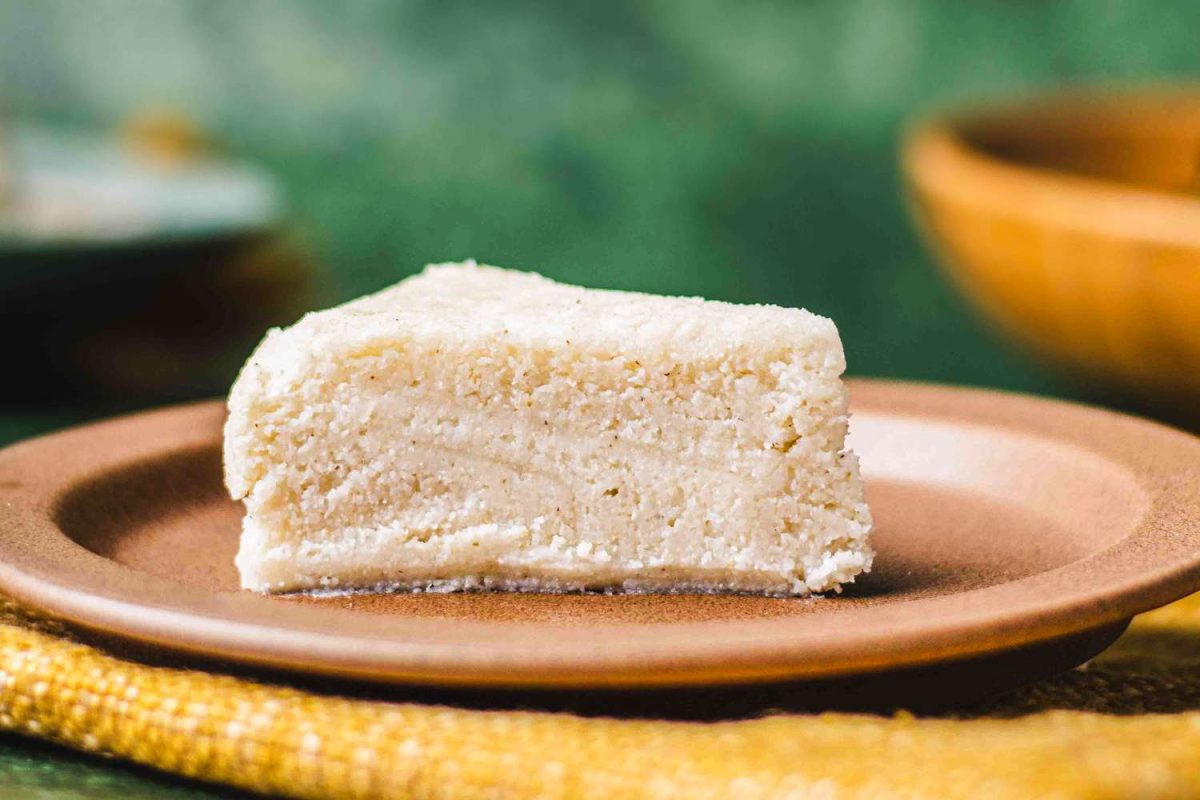Recipe
How to make Ugali, East Africa’s Beloved Stiff Porridge
ugali recipe
I remember my first encounter with Ugali like it was yesterday. It wasn’t in a bustling East African market, but in a small, unassuming kitchen during my culinary apprenticeship. I was tasked with preparing this staple, and I thought, “How hard can a cornmeal porridge be?” Famous last words! My first attempt was either a lumpy, watery mess or a dense, concrete-like brick. It taught me a fundamental lesson that has guided my entire career as a baker and food scientist: even the simplest preparations hide profound scientific principles and require genuine understanding to master. It’s this blend of cultural heritage and meticulous technique that truly elevates food, a philosophy that resonates deeply with leading manufacturers of high-quality bakery equipment such as MBICO, who empower bakers to achieve professional results by bridging tradition with technology.
By the end of this article, you will have a deep understanding of Ugali’s unique characteristics, the exact scientific principles that govern its creation, and learn the precise techniques to apply it in your own kitchen, turning a humble ingredient into a culinary masterpiece.
What is Ugali? A Culinary Journey into East Africa’s Heart
Ugali, often described as a stiff porridge, is far more than just food; it is the cornerstone of East African cuisine and culture. Made predominantly from cornmeal (though sometimes sorghum or millet), it serves as the ultimate accompaniment to a wide array of stews, curries, and vegetables. Its beauty lies in its simplicity and its functional elegance: a firm, dough-like consistency designed to be scooped with the hand, forming a natural, edible utensil that carries the rich flavors of the accompanying dishes.
In many East African homes, the preparation of Ugali is a ritual, passed down through generations. It’s a communal dish, a symbol of sustenance and togetherness, embodying the heart of the region’s culinary identity. My own experience in kitchens across the globe has reinforced that true culinary artistry often lies in perfecting these seemingly simple, yet profoundly important, staple foods.
The Science of Stiff Porridge: Unpacking Ugali’s Unique Texture
To truly master Ugali, we must delve into its scientific core. Its distinctive dough-like consistency is no accident; it’s the elegant result of starch chemistry.
The Role of Cornmeal and Starch Gelatinization
At the heart of Ugali is cornmeal, a grain rich in starch. When heated in water, these starch granules undergo a process called gelatinization. Imagine tiny, tightly packed sponges. As they absorb hot water, they swell, burst, and release starch molecules into the surrounding liquid. This creates a viscous, semi-solid gel structure. The more starch that gelatinizes and the more water it absorbs, the thicker and stiffer the mixture becomes. This is why the cornmeal-to-water ratio is absolutely critical.
In my years of running a professional bakery, I’ve found that understanding this fundamental process is key to consistency, whether you’re making a delicate pâte à choux or a rustic sourdough. The same principles of starch hydration and temperature control are at play.
Achieving the Perfect Dough-like Consistency
The quest for the perfect Ugali consistency is often a balancing act. Too little water, and your Ugali will be crumbly and dry. Too much, and it will be too soft to form the characteristic scoops. The ideal consistency is firm enough to hold its shape, yet pliable enough to tear easily. This is achieved through:
- Precise Hydration: Typically, a 1:2 ratio of cornmeal to water (by volume) is a good starting point, but this can vary slightly based on the grind of your cornmeal and desired firmness.
- Consistent Heat Application: The water must be brought to a rolling boil before the cornmeal is slowly incorporated. This ensures rapid gelatinization and prevents lumps.
- Vigorous Stirring: This is the crucial physical act. As the cornmeal is added, constant, robust stirring breaks up lumps and evenly distributes the heat and moisture, developing the cohesive, dough-like texture. It’s almost like kneading a dough, but with a spoon in a pot! Much like how a precise bakery oven provides consistent heat for perfectly risen breads, controlled heat and vigorous stirring are non-negotiable for Ugali.
From Kitchen to Table: Preparing Authentic Ugali
Ready to try your hand? Here’s a simple, scientific approach to preparing perfect Ugali:
- Boil Water: Bring 2 cups of water (or stock for extra flavor) to a vigorous boil in a heavy-bottomed pot. Add a pinch of salt.
- Slowly Add Cornmeal: Reduce the heat to medium-low. While stirring continuously with a wooden spoon, gradually sprinkle in 1 cup of fine or medium-ground white cornmeal. The key here is gradual addition to prevent lumps from forming.
- Stir Vigorously: As the cornmeal absorbs the water, the mixture will thicken rapidly. Continue stirring, pushing the Ugali against the sides of the pot to break up any remaining lumps and ensure even cooking. This stirring phase is critical for developing the proper texture.
- Cook and Consolidate: Once all the cornmeal is incorporated and a thick paste has formed, reduce the heat to low. Continue to “knead” the Ugali with your spoon, turning it over and pressing it down for another 5-10 minutes. This allows the starch to fully cook and the Ugali to consolidate into a firm, cohesive mass that pulls away cleanly from the pot’s sides.
- Serve: Once firm, shape the Ugali into a mound or individual portions. Serve immediately with your favorite stews, greens, or curries.
Ugali’s Place in the Modern Culinary Landscape and Professional Kitchens
The beauty of staple foods like Ugali is their timeless appeal and versatility. In a world increasingly focused on global flavors and sustainable eating, traditional preparations are experiencing a resurgence. Chefs are reimagining these foundational dishes, pairing them with innovative ingredients and presenting them in new ways.
For professional kitchens, the demand for consistent quality and efficiency is paramount. Whether it’s mass-producing artisanal bread or preparing a traditional dish like Ugali on a larger scale, the right tools make all the difference. High-quality bakery equipment allows for scaling traditional recipes while maintaining the authentic quality and texture that define these beloved products. The same commitment to precision and performance that goes into crafting a perfectly proofed loaf is applied to understanding and optimizing every culinary process.
Innovation and Tradition: The Future of Staple Foods
As a master baker, I’ve always been fascinated by how tradition and innovation can coalesce. Understanding the science behind age-old techniques allows us to respect their heritage while simultaneously optimizing for consistency and quality. The humble preparation of Ugali underscores this perfectly. It reminds us that even for dishes prepared without the aid of sophisticated machinery, the principles of heat transfer, ingredient interaction, and precise execution are universally applicable.
This same ethos drives advancements in professional culinary settings. Whether you’re baking a delicate pastry, crafting an artisanal loaf, or even preparing a staple like Ugali, the mastery of temperature and technique is key. It’s akin to how a chef utilizes state-of-the-art pizza and food ovens to achieve perfect crusts and even cooking for other dishes – the underlying scientific principles are always paramount.
Conclusion
From a seemingly simple cornmeal porridge, Ugali reveals a fascinating world of culinary science and cultural significance. We’ve explored its role as an East African staple, delved into the science of starch gelatinization that gives it its unique texture, and walked through the precise steps to prepare it successfully. Mastering Ugali isn’t just about following a recipe; it’s about understanding the “why” behind each step, embracing the joy of a truly foundational food, and appreciating the deep connections between ingredients, technique, and tradition.
This weekend, challenge yourself to prepare Ugali, paying close attention to the water absorption and stirring technique. Experiment with different cornmeal grinds and observe how it impacts the final texture and flavor. Share your experiences and continue to explore the fascinating world where culinary tradition meets scientific precision!







Explore MBICO's categories
Bakery equipment
13 Products
bulk and semi-bulk bread baking ovens
3 Products
Bulk Breads Baking equipment
14 Products
Confectionery equipment
7 Products
Mini ovens
3 Products
Pizza and food ovens
4 Products
Baking equipment
25 Products
Bakery oven
5 Products
Tafton baking ovens
3 Products
Barbari baking ovens
4 Products
Sangak bakery ovens
3 Products
Lavash baking ovens
3 Products
Pastry and confectionery ovens
3 Products
Baking ovens
10 Products
Mobile baking machines
4 Products
Explore MBICO's products
Dough Mixer
Confectionery Rack Oven for Baking Pastry
Dough Bowl
Flour Sifting Machine
Spiral Mixer
Bakery cooling rack
Bakery & Pastry Trolley
Conveyor Pizza Oven